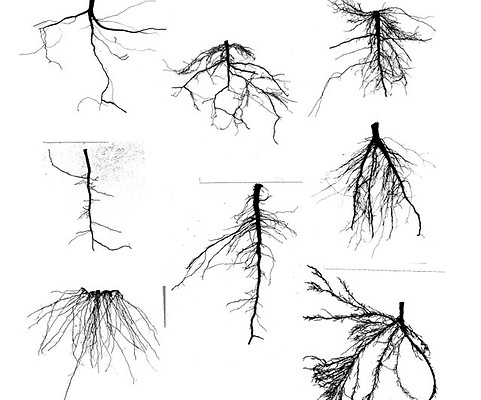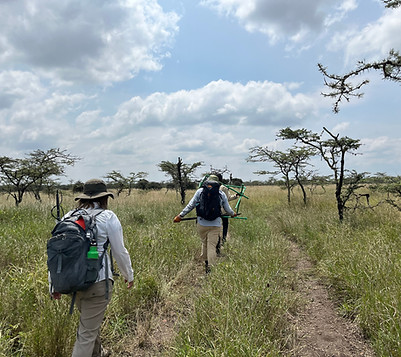
Projects: Current and Past
N-fixer facilitation and competition in the plant community: a meta-analysis

Several recent regional studies have cast doubt on the widespread assumption that N-fixers act as facilitators of neighboring plant communities. I conducted a meta-analysis
to synthesize the effects of N-fixers on plant communities
and to understand how ecological context moderates these effects. I found that N-fixers led to higher soil N and neighboring-plant biomass, but lower community diversity. The effect of N-fixers on neighboring-plant biomass was strongly mediated by soil texture; N-fixer invasive status and growth form were also significant mediators of the facilitative effects of N-fixers. Overall, N-fixer effects lie on a continuum between facilitation and suppression that is moderated by intrinsic and extrinsic processes, and this analysis provides insight into how these factors moderate the effects of N-fixers. The full manuscript can be found here.
Using multiple metrics of Biodiversity to predict Ecosystem Functioning
In collaboration with the Farrior Lab, we are conducting a large-scale Biodiversity and Ecosystem Functioning field experiment in which species diversity, phylogenetic diversity (PD), and functional trait diversity are factorially manipulated across drought and insect removal treatments using a native Texas grassland system. Within this setup, I am exploring the relationships between productivity and complementarity with PD across water availability. Additionally, I am testing whether traits with low phylogenetic signal explain additional variability in the BEF relationship that PD alone does not.


Above and belowground trait decoupling in response to changes in diversity and water availability
In collaboration with Damla Cinoğlu, we are interested in understanding if above and belowground functional traits may respond differently to abiotic and biotic changes, potentially leading to trait decoupling, as functional traits can provide critical insights into how plants mediate responses to global change. We collected 11 functional traits (7 above and 4 below) from individuals grown in non-watered-monoculture, non-watered-12 species, watered-monoculture, and watered-12 species plots. Preliminary results present evidence of decoupling as individuals in polycultures exhibit a more conservative aboveground trait syndrome (lower leaf N, smaller leaf area) and acquisitive belowground traits (lower root diameter, higher SRL) compared to individuals in monocultures.

Quantifying plant community responses to multiple disturbances using a long-term field experiment in the Kenya Savanna
In collaboration with Dr. Wolf, we established a Nutrient Network site within the Kenya Long-term Exclosure Experiment (KLEE) experiment at the Mpala Research Station in Laikipia, Kenya, representing the fifth NutNet site on the African continent, and the second site in Africa outside of South Africa. While the KLEE experiment has been ongoing since 1995, the NutNet plots were established in 2024.
Understanding how life history mediates the effects of rhizobia and AMF inoculation on seedling mortality

The seedling stage is one of the most critical stages in a plant’s life cycle, as it experiences a high degree of susceptibility to environmental stressors, and in particular, light limitation. Seedling life history may mediate responses to light limitation, as it often determines growth strategy and resource requirements. Additionally, seedlings also begin to establish relationships with rhizobia and arbuscular mycorrhizal fungi (AMF), which are also influenced by life history for similar reasons. However, little is known regarding how life history, microbial mutualisms, and light interact to influence seedling success. To address this gap, I conducted a greenhouse study in which I grew annual and perennial N-fixers and manipulated the presence of rhizobia and AMF across light availability to understand their influence on seedling mortality. Early results suggest a cost to establishing rhizobia mutualisms that increases seedling mortality, but this depends on life history.
Assessing competition as a mechanism of coexistence in temperate grasslands
My undergraduate thesis centered around competition-mediated plant coexistence. More specifically, how N-fixer fitness can be affected by species composition within a small community. I designed an experiment in which the ratio of N-fixers to non-fixers was altered to see if there was any change in the fitness. I found that non-fixing plants were devoting more biomass to fine roots than N-fixers. Additionally, when the N-fixers produced nodules, individuals had less fine root growth.
